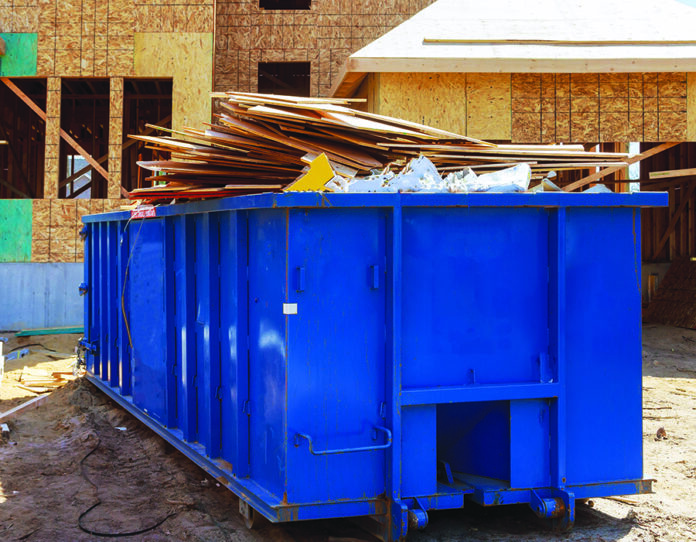Whenever I drive by a site-built home under construction, especially during or just after framing, I see piles of precious lumber on the ground. Most of that lumber is either strewn across a muddy front yard or cut up into a myriad of lengths and thrown into small piles.
Eventually, all that lumber in the mud and in those piles finds its way to a dumpster and then to a nearby landfill. Virtually none of it gets recycled. With an estimated 1.3 million single-family homes starting last year, that’s a lot of very expensive waste.
In other words, dumpsters full of money are being hauled to local landfills.
Construction Waste by the Numbers:
- 1.3 Million home starts in 2021 (U.S. Census Bureau)
- An average of 8,000 pounds of construction waste per home (NAHB)
- 40% of annual landfill waste comes from construction (U.S. EPA)
The situation is very different in offsite construction. The best way to visualize the contrasting ways onsite and offsite handle waste are to look at how they use dumpsters.
On a typical site build, a 30 cubic yard dumpster can be found sitting in the front yard. It will get filled up once, or even twice, during construction. What many don’t seem to consider is that not only do you pay to have the dumpster sitting on the site and to have the waste inside of it disposed of, you also paid for all of the material being hauled away.
Now consider a typical modular or panel factory. There you will see several small, three cubic yard dumpsters placed throughout the facility. They’re labeled so that specific materials go into specific ones. There’s also a big difference in what the factory does with that waste when compared to the typical site builder.
The mantra of offsite construction is Reduce, Reuse, Recycle.
Reduce. Offsite factories reduce material usage in a few ways. One is through efficient designs that optimize lumber use—in fact, the factory can optimize lumber use over several homes. They’re also able to bulk order materials, which minimizes packaging debris.
Reuse. The off-fall from the cutting of boards in the factory is a great example of reuse. For instance, two-foot pieces of lumber can be saved and used as blocking in walls and floors rather than being thrown away. Small pieces of drywall that would be disposed of on a site build can be put aside and used in the next panel or module.
Recycle. If something can’t be designed out or reused in another unit, it gets recycled. Wire, gypsum, wood, and other materials are all recyclable and the factory will have specific collection containers for recycling each one.
In the end, very little of the construction debris generated in the factory ever makes it to the landfill.
The point is that offsite construction is sustainable construction. And what is good for the environment is also good for the builder’s and manufacturer’s bottom line.

















